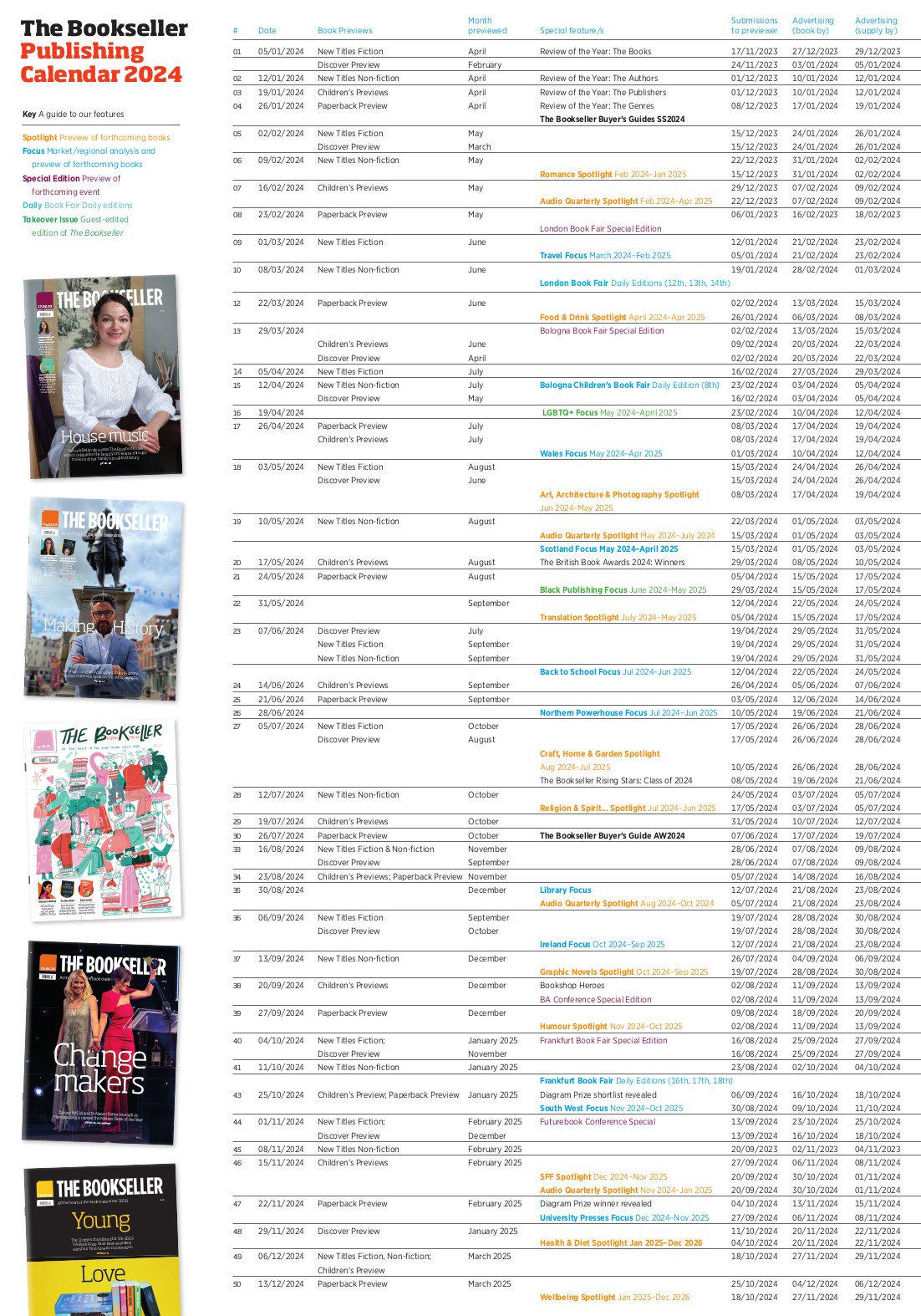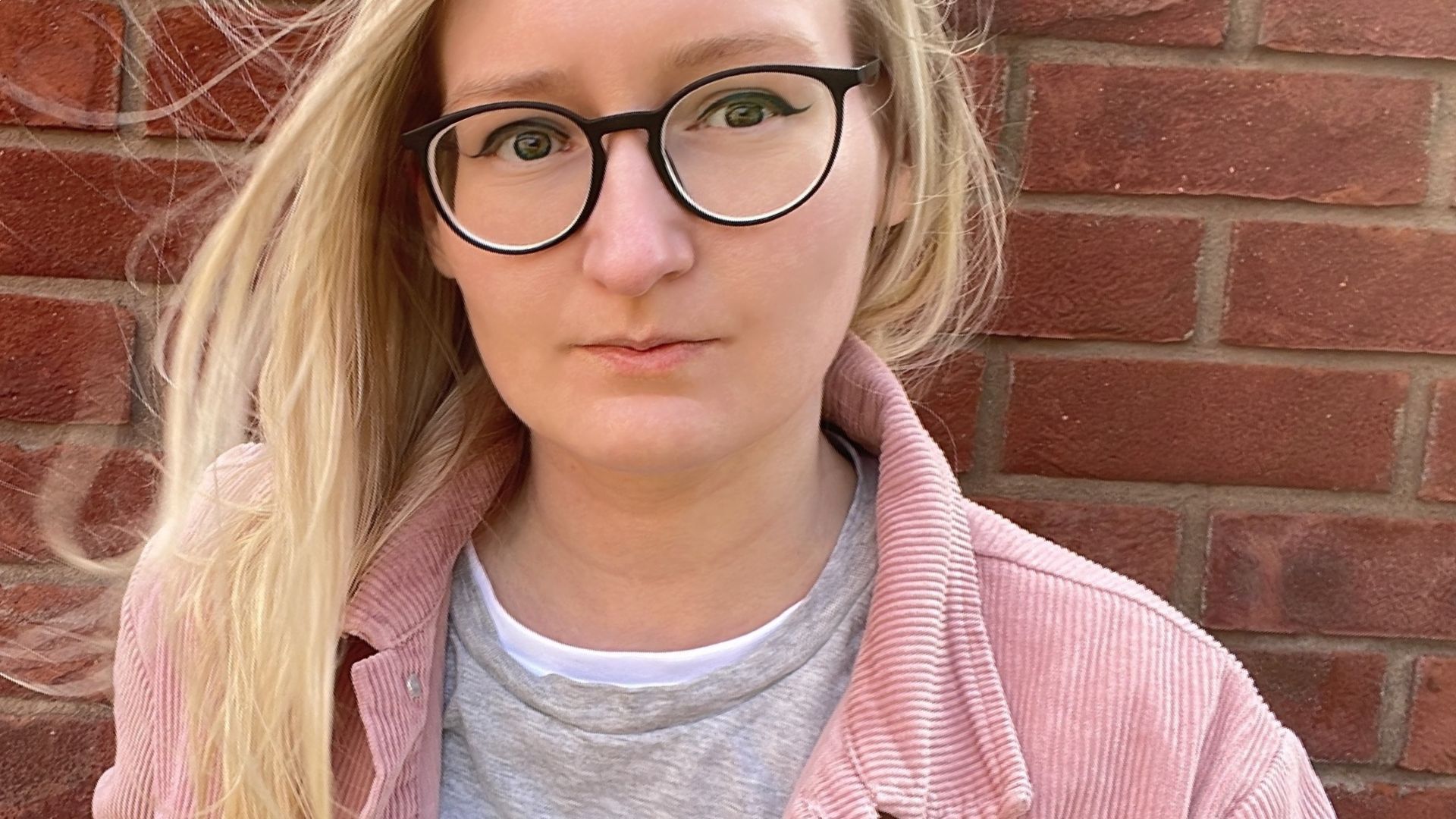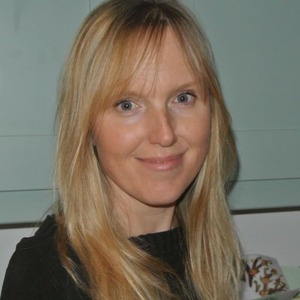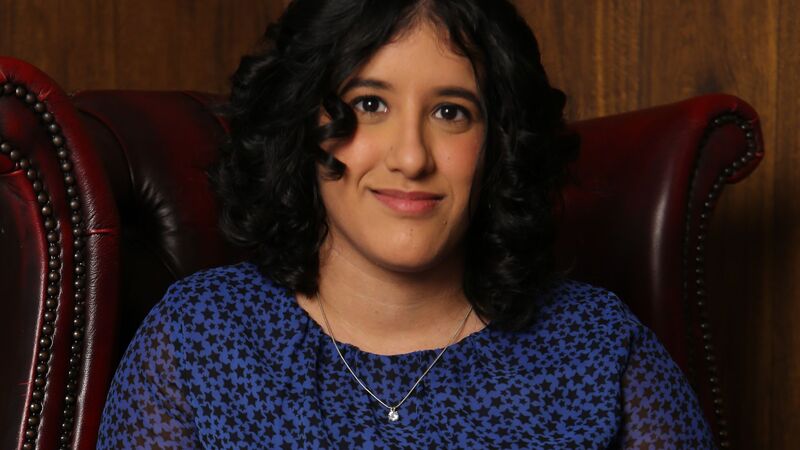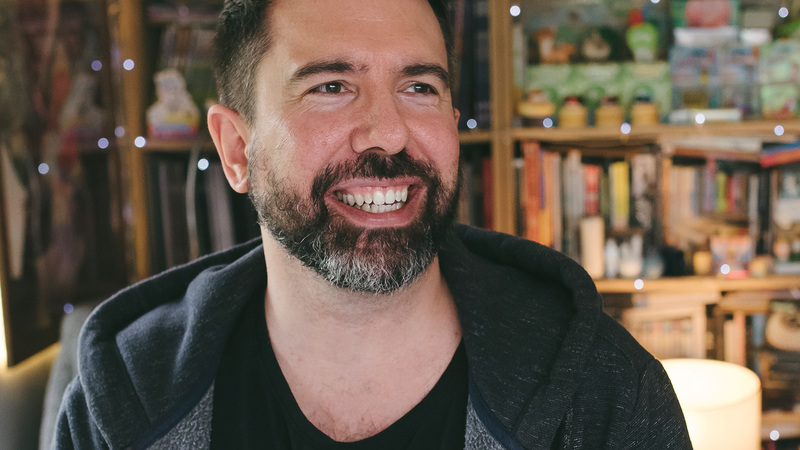You are viewing your 1 free article this month. Login to read more articles.
L D Lapinski on writing their joyous and affirming novel with a non-binary protagonist
L D Lapinski planned a fantasy but was drawn back to the joyous adventure that became their latest, Jamie.
Following the success of The Strangeworlds Travel Agency trilogy, author L D Lapinski, who uses the pronouns they/them, set out to write a new middle-grade novel. Every conversation with publisher Hachette Children’s Books had involved a fantasy adventure, but things didn’t go quite to plan. “I sat down to write a new fantasy book,” Lapinski tells me over video call from their home near Sherwood Forest, “but Jamie kept pulling on my sleeve.” The book came together quickly and they emailed it to agent Claire Wilson with a note: “No one has asked for this, what do I do with it?” Wilson loved it, and so did Hachette, who sent Lapinski a pitch full of staff praise. “I was so thrilled to see that support. If Jamie was ever going to find a home, I wanted it to be somewhere people were happy and enthused to have them.”
It’s probably why it’s written in the first person, a lot of it was straight out of my mind and how I felt
Jamie will be published under the Orion Children’s Books imprint in March, with striking cover art by fellow non-binary creator Harry Woodgate. The book follows an 11-year-old non-binary child who discovers they must choose between a boys’ or girls’ school when they move up to Year Seven. When Jamie realises that no-one has considered where they will go, they decide to take matters into their own hands, with a little bit of help from their friends. The book has an incredibly lovable narrator in Jamie, an upbeat, hopeful spirit, and a rich sense of the importance of friendship and community. The novel began life as a non-fiction outpouring of thoughts and feelings. “It’s probably why it’s written in the first person,” Lapinski recalls. “A lot of it was straight out of my mind and how I felt.” Looking at the snippets as a whole, Lapinski realised they had something. “There was a lot of joy there, and a lot of hope. I wanted to give it a bit of body and see where it could go.” The character of Jamie sprang into being fully formed, “a confident, happy, determined kid who knew exactly what they wanted to do and wanted to show people how great things could be.”
Lapinski is a huge fan of Jeff Kinney’s Wimpy Kid series and wanted to capture a similar energy for Jamie. “I love how there’s always a very small crisis going on in Greg’s life but because Greg is a kid it’s an absolutely enormous deal that’s going to take the entire book.” Trying to choose between two schools feels like Jamie’s entire world, but at the same time they want to show everyone that it doesn’t have to be a big deal. Writing in the first person was key to developing Jamie’s voice. “I wanted to have it completely from Jamie’s point of view and show that they are out there saying, ‘Things can be good, things can be great. Widen your horizons, look into my little world.’”
Affirming adventure
The plot pivots around the impact of the choice Jamie must make. Lapinski was keen to explore the decisions constantly facing a non-binary child: which toilets to use, which side of the clothes shop to buy from, which school to choose. What if the adults around them were not being as supportive as they perceived themselves to be? How would an 11-year-old and their friends set out to tackle that? “I wanted it to be a joyous explosion,” Lapinski explains, “of these kids having an affirming adventure and sticking up for themselves.” The action comes to a head when Jamie and their best friends stage a rooftop protest, creating a wave of support across the city. “It doesn’t get bigger than that when you’re 11,” Lapinski laughs. “That image was really strong in my mind from the off. That, for me, is the book: Jamie and their friends on the rooftop, waving their flag and everyone around them so, so happy.”
There are non-binary children, there are non-binary adults. It’s about inclusion, about real life, understanding that this is completely mainstream, not that unusual or something to be questioned.
A self-confessed “stereotypical voracious reader” Lapinski was drawn to anything where an ordinary kid had an extraordinary adventure. “I was always waiting to come across that magical tree or that magical suitcase.” An English degree and stint in teaching was followed by an MA in Creative Writing at Nottingham Trent University. It was there that Lapinski’s tutor, author Graham Joyce, pointed out that they were writing for young people. This proved to be a real lightbulb moment. “I’m eternally grateful that he took the time to say, ‘This is what you’re doing without realising it, here’s how you hone it and here’s how you get published.’” They signed with “dream agent” Claire Wilson for a Young Adult book which didn’t get published, but it did grant Lapinski time to hone their craft. The first book in the Strangeworlds Travel Agency trilogy, which also features LGBTQ+ characters, garnered a “lightning quick” response from publishers, resulting in rights sales across 16 languages and three Kirkus starred reviews in the US. The trilogy concluded this year but in 2023 Flick and Jonathan return in a World Book Day £1 title, Adventure in the Floating Mountains. “It’s such a fantastic scheme,” says a thrilled Lapinski of the annual reading celebration. “The whole thing is joy.”
Lacking exposure
Born in 1987, Lapinski recalls a childhood under the shadow of Section 28. “Queer people were like unicorns when I was growing up. I remember studying queer modernism at university and it was the first time I’d ever been handed queer literature. You shouldn’t wait until you’re 19.” Seeing LGBTQ+ characters in children’s books is, they believe, of vital importance. “There are non-binary children, there are non-binary adults. It’s about inclusion, about real life, understanding that this is completely mainstream, not that unusual or something to be questioned.” But representation is not only about children seeing themselves as the hero. “It’s also about kids seeing other people as the hero. If we say, ‘This is only a book for non-binary kids’, that’s very much not the case.”
These are universal themes: not fitting in, not being taken into consideration, standing up for what you believe in. “It’s about asking for a space for yourself, for people to listen to you and to show off the joy that can be found in all identities, in all different kinds of people.” Earlier in 2022, author Simon James Green was banned from visiting a school due to the LGBTQ+ content of his work. Has Lapinski experienced negative feedback since the announcement of Jamie?
“Not at all. What I have had are some really beautiful messages from people who can’t wait to get this book for their non-binary kid, or messages from kids who are asking their parents for it. Librarians and booksellers so supportive. It’s been a really beautiful build-up to publication.”



